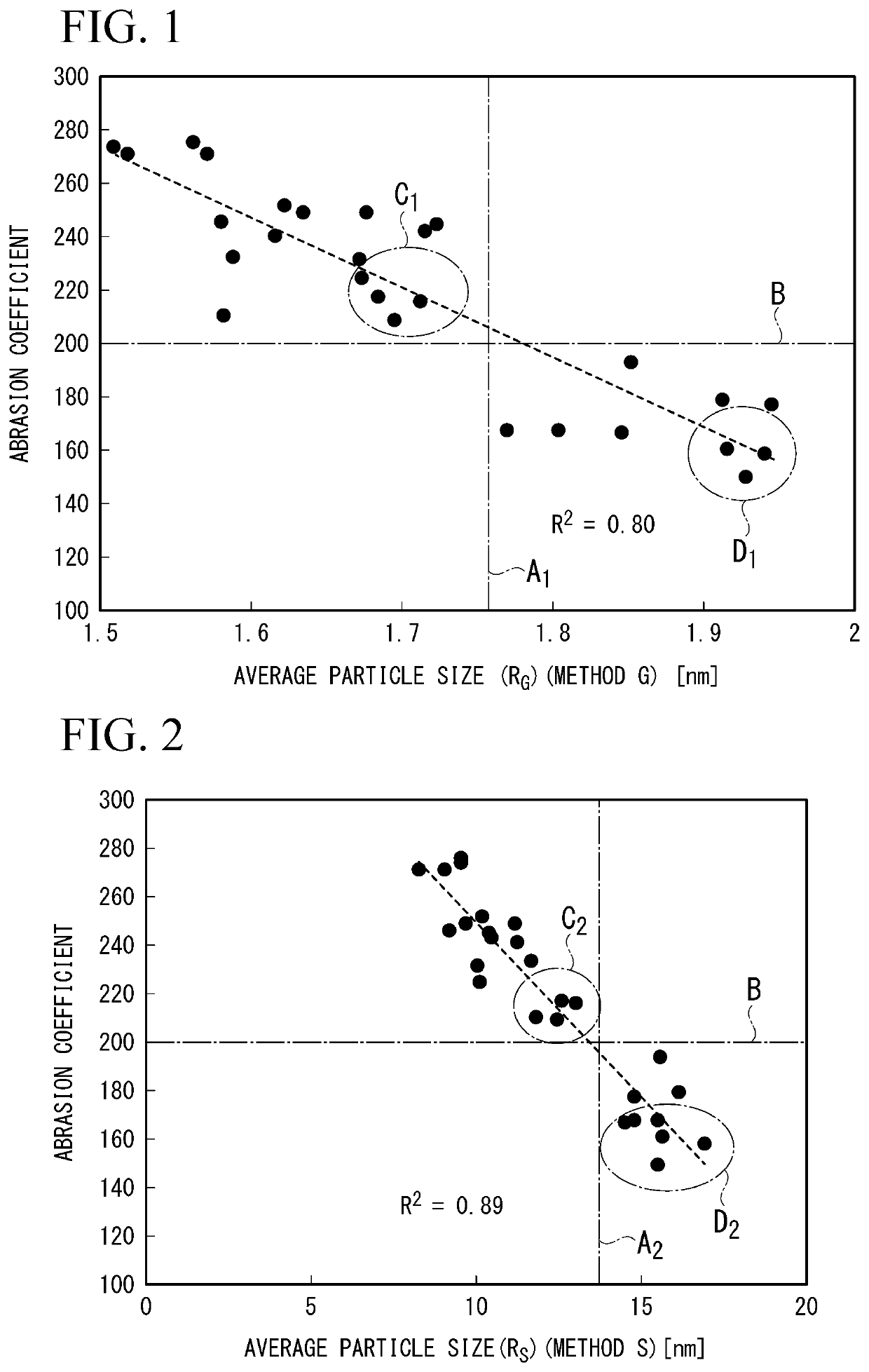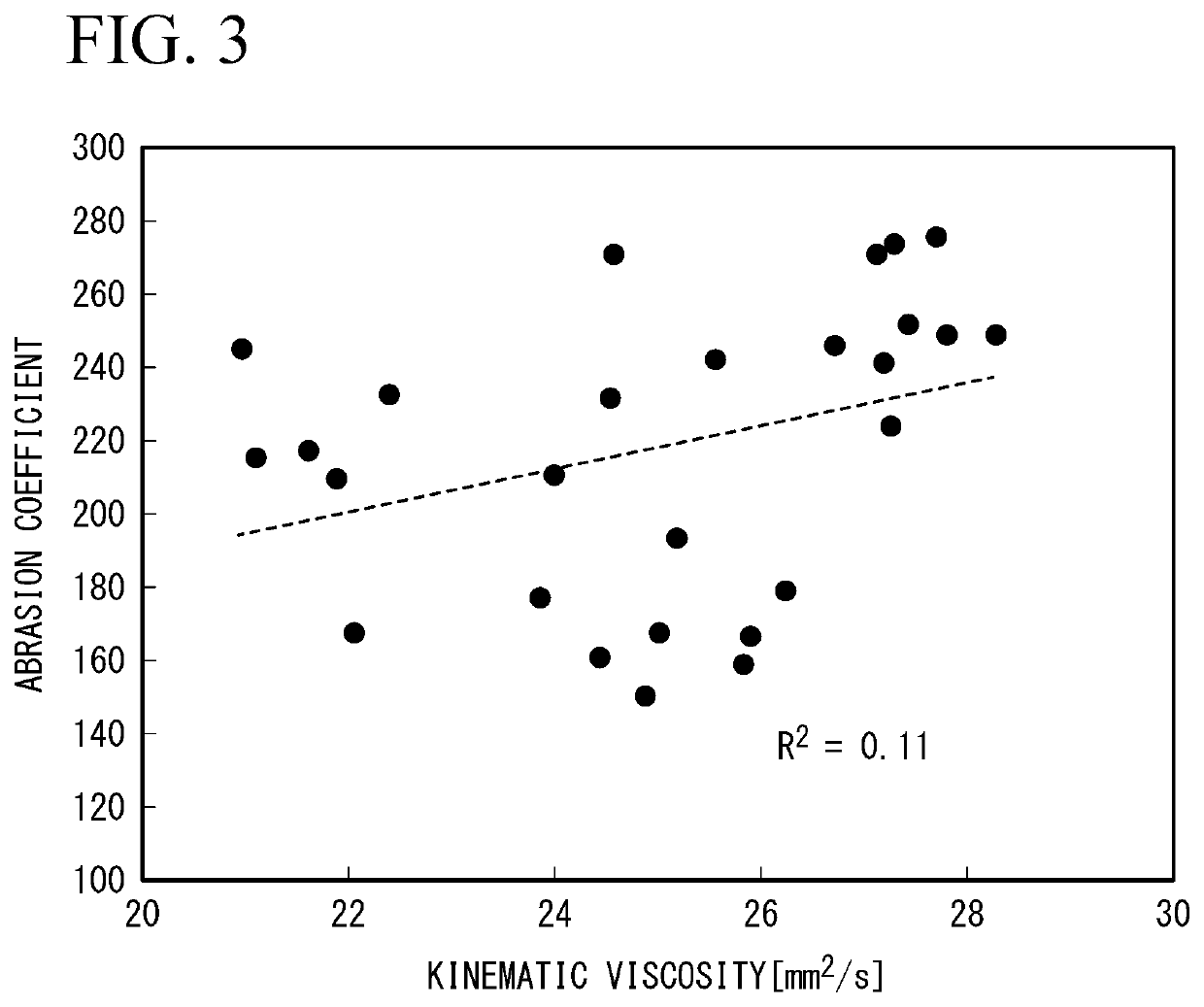Method of inspecting lubricating oil composition and method of producing lubricating oil composition
a technology of lubricating oil and composition, which is applied in the direction of lubricant composition, material analysis using wave/particle radiation, instruments, etc., can solve the problems of wasting time and effort in measuring wear coefficient, and achieve the effect of stably reproducing wear resistance characteristics and being easy to measur
- Summary
- Abstract
- Description
- Claims
- Application Information
AI Technical Summary
Benefits of technology
Problems solved by technology
Method used
Image
Examples
example 1
[0117]For the 27 samples of the lubricating oil compositions and the base oil (mineral oil A), small-angle X-ray scattering measurements were performed to obtain scattering intensity profiles of particles. In the small-angle X-ray scattering measurement of the 27 samples of the lubricating oil composition, using each scattering intensity profile of the obtained particles, an average particle size (RG) was calculated by the G method. In the small-angle X-ray scattering measurement of the base oil (mineral oil A), since no particle was observed in the base oil (mineral oil A), the particle size measurement result was not obtained. Then, wear coefficients of the 27 samples of the lubricating oil compositions were measured, and the relationship between the average particle sizes (RG) and the wear coefficients is shown in FIG. 1. The average particle sizes (RG) and wear coefficient values are shown in Table 2.
TABLE 2Average particle size (RG)Lubricating oilWear coefficient(Method G) [nm]...
example 2
[0120]The relationship between the average particle sizes (RS) of the particles and the wear coefficients was evaluated in the same manner as in Example 1, except that the average particle sizes (RS) of the particles were calculated by the S method using the scattering intensity profile of the particles and the scattering intensity profile of mineral oil A. Table 3 shows the average particle sizes (RS) and wear coefficients, and FIG. 2 shows the relationship between the average particles sizes (RS) and wear coefficients.
TABLE 3Average particle size (RS)Lubricating oilWear coefficient(Method S) [nm]compositionSample 1Sample 2Sample 3Sample 1Sample 2Sample 3Example 2-1116716816814.514.715.4Example 2-2221123324511.711.710.4Example 2-3321720921612.612.412.9Example 2-4419417716115.514.715.6Example 2-552462712729.19.08.2Example 2-6624123224311.210.010.4Example 2-7715017915915.416.116.9Example 2-882742492769.59.79.5Example 2-9924925222411.110.110.0
[0121]From the results shown in FIG. 2, th...
PUM
 Login to View More
Login to View More Abstract
Description
Claims
Application Information
 Login to View More
Login to View More - R&D
- Intellectual Property
- Life Sciences
- Materials
- Tech Scout
- Unparalleled Data Quality
- Higher Quality Content
- 60% Fewer Hallucinations
Browse by: Latest US Patents, China's latest patents, Technical Efficacy Thesaurus, Application Domain, Technology Topic, Popular Technical Reports.
© 2025 PatSnap. All rights reserved.Legal|Privacy policy|Modern Slavery Act Transparency Statement|Sitemap|About US| Contact US: help@patsnap.com


